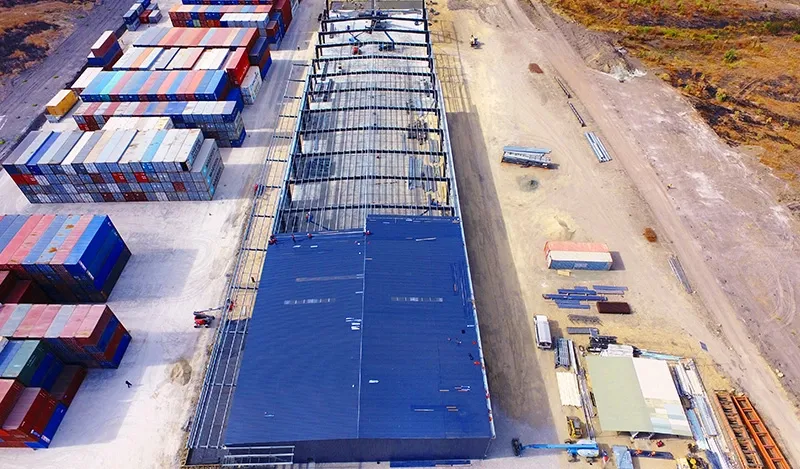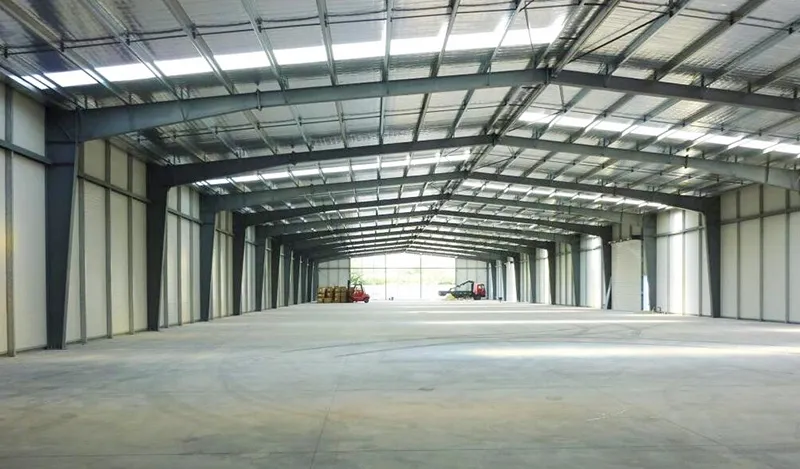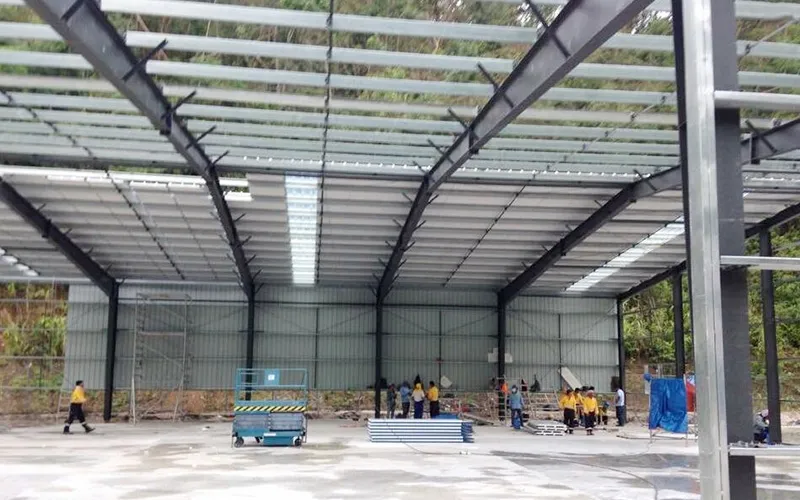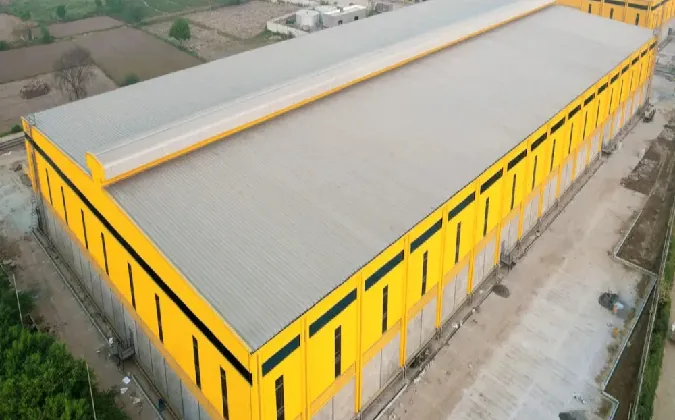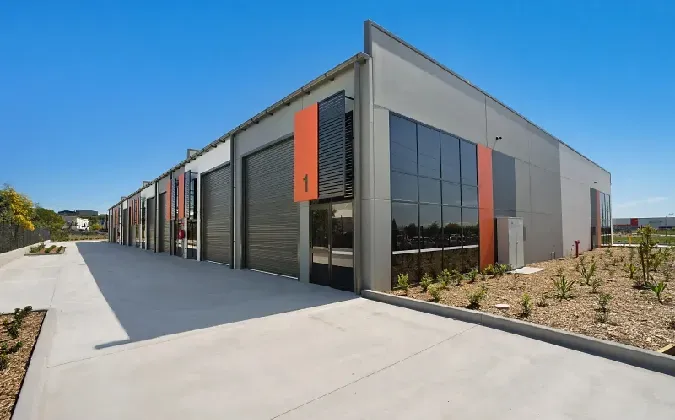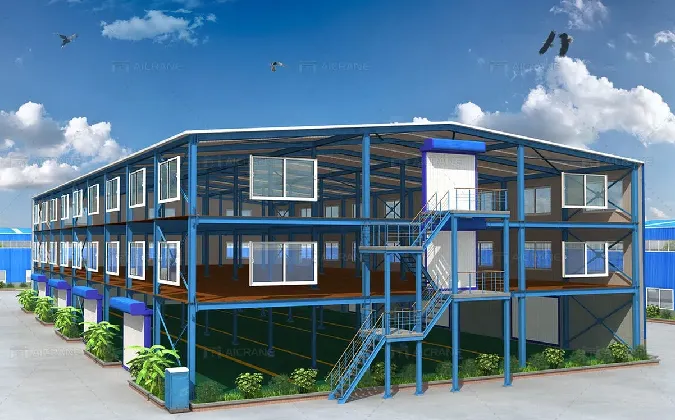- Afrikaans
- Albanian
- Amharic
- Arabic
- Armenian
- Azerbaijani
- Basque
- Belarusian
- Bengali
- Bosnian
- Bulgarian
- Catalan
- Cebuano
- Corsican
- Croatian
- Czech
- Danish
- Dutch
- English
- Esperanto
- Estonian
- Finnish
- French
- Frisian
- Galician
- Georgian
- German
- Greek
- Gujarati
- Haitian Creole
- hausa
- hawaiian
- Hebrew
- Hindi
- Miao
- Hungarian
- Icelandic
- igbo
- Indonesian
- irish
- Italian
- Japanese
- Javanese
- Kannada
- kazakh
- Khmer
- Rwandese
- Korean
- Kurdish
- Kyrgyz
- Lao
- Latin
- Latvian
- Lithuanian
- Luxembourgish
- Macedonian
- Malgashi
- Malay
- Malayalam
- Maltese
- Maori
- Marathi
- Mongolian
- Myanmar
- Nepali
- Norwegian
- Norwegian
- Occitan
- Pashto
- Persian
- Polish
- Portuguese
- Punjabi
- Romanian
- Russian
- Samoan
- Scottish Gaelic
- Serbian
- Sesotho
- Shona
- Sindhi
- Sinhala
- Slovak
- Slovenian
- Somali
- Spanish
- Sundanese
- Swahili
- Swedish
- Tagalog
- Tajik
- Tamil
- Tatar
- Telugu
- Thai
- Turkish
- Turkmen
- Ukrainian
- Urdu
- Uighur
- Uzbek
- Vietnamese
- Welsh
- Bantu
- Yiddish
- Yoruba
- Zulu
Ağu . 10, 2025 05:20 Back to list
The Paradigm Shift in Industrial Construction: Embracing Prefabricated Structures
The landscape of industrial construction is undergoing a profound transformation, moving decisively from traditional, site-intensive methods to highly efficient, precision-engineered prefabricated industrial buildings. This evolution is driven by a confluence of economic imperatives, technological advancements, and a growing demand for sustainability and rapid deployment. Modern industrial operations, including vast logistics hubs, high-volume manufacturing plants, and specialized storage facilities such as our cutting-edge Steel Freight Warehouse Solutions, increasingly require infrastructure that can be erected with unprecedented speed and accuracy while maintaining stringent quality and performance standards. The inherent advantages of prefabrication, particularly in steel building construction, are becoming undeniable across diverse sectors. These benefits include significantly reduced on-site labor, minimized construction waste, enhanced safety protocols through off-site fabrication in controlled environments, and unparalleled flexibility for future expansion or repurposing. Furthermore, the ability to concurrently execute foundation work on-site while structural components are manufactured off-site compresses project timelines by as much as 30-50%, a critical factor in today's fast-paced global economy. The shift towards modularity also enables greater cost predictability, as material waste is optimized and labor costs are contained, mitigating the financial risks often associated with traditional builds. As industries strive for operational excellence and environmental stewardship, the adoption of prefabricated methodologies represents a strategic imperative. Leading industry reports, such as those from the Modular Building Institute (MBI), consistently demonstrate the exponential growth in modular construction, attributing its rise to its intrinsic efficiency, sustainability metrics, and adaptability to complex project requirements. The economic impact is profound: projects utilizing prefabricated methods report average cost savings of 7-10% and completion times accelerated by up to 60% compared to conventional approaches. This rapid deployment capability is particularly vital for sectors experiencing rapid expansion or requiring immediate operational capacity, such as e-commerce, cold chain logistics, and advanced manufacturing. The focus on steel as the primary material for these structures further amplifies these advantages due to its high strength-to-weight ratio, recyclability, and inherent durability, making it an ideal choice for robust, long-lasting industrial assets. The meticulous engineering and fabrication of steel components off-site ensure dimensional accuracy and structural integrity that is often difficult to achieve under dynamic on-site conditions. This precision not only enhances the overall quality of the building but also significantly streamlines the assembly process, reducing potential for errors and subsequent rework. Moreover, the integration of Building Information Modeling (BIM) and advanced CAD/CAM software in the design and fabrication phases allows for a seamless workflow from concept to construction, optimizing material utilization and minimizing environmental impact. The global market for prefabricated buildings is projected to continue its robust growth trajectory, driven by infrastructure development needs, urbanization, and the continuous push for smarter, more efficient construction practices. Investors and industrial operators alike are recognizing the superior return on investment and operational continuity offered by these advanced building solutions. The emphasis on high-performance envelopes, integrated smart systems, and adaptable interior layouts also positions prefabricated industrial buildings as a cornerstone of future-proof infrastructure, capable of evolving with technological advancements and shifting operational demands, truly embodying the essence of a speedy industrial building solution.
Engineering Excellence: Technical Parameters and Structural Integrity of Prefabricated Industrial Buildings
The robust performance and longevity of prefabricated industrial buildings are fundamentally rooted in their meticulously engineered technical parameters and the inherent integrity of their structural components. At the core of these structures is high-strength structural steel, predominantly conforming to standards such as ASTM A572 Grade 50 or ASTM A992 for primary framing elements like columns, beams, and trusses, offering a minimum yield strength of 50,000 psi (345 MPa). Secondary framing, including purlins and girts, often utilizes cold-formed steel sections, providing lightweight yet robust support for roof and wall cladding. Design considerations are paramount, adhering strictly to international building codes and standards, including the International Building Code (IBC) and ASCE 7 (Minimum Design Loads and Associated Criteria for Buildings and Other Structures). These codes dictate precise load-bearing calculations for various forces: dead loads (weight of the building itself), live loads (occupancy, stored materials), snow loads (ranging from 20 psf to over 100 psf depending on geographic location), wind loads (calculated based on local wind speeds and building height/shape, often exceeding 120 mph design speeds), and seismic loads (determined by seismic hazard maps and building occupancy categories). For instance, a typical steel building designed for a high-snow load region might feature roof slopes optimized for snow shedding and increased purlin spacing to accommodate heavier loads, while a building in a hurricane-prone area would require enhanced connections and reinforced wall panels to resist extreme wind uplift and pressure. The structural analysis employs advanced software such as SAP2000 or ETABS to simulate complex load combinations and optimize member sizes, ensuring both safety and material efficiency. Connections, often bolted (using high-strength bolts like ASTM A325 or A490) or welded (to AWS D1.1 standards), are critical for transferring forces throughout the structure and are designed with substantial safety factors. The foundation system, though typically site-cast, is engineered to seamlessly integrate with the prefabricated steel superstructure, often using anchor bolts precisely positioned during foundation pouring. Thermal performance is addressed through high-performance insulation systems, including fiberglass batts, rigid foam panels, or composite sandwich panels with R-values ranging from R-19 to R-30+ for walls and R-25 to R-40+ for roofs, significantly enhancing energy efficiency and reducing operational costs. For specialized applications like cold storage, advanced insulated metal panels (IMPs) with integrated thermal breaks are employed to maintain precise temperature control. Acoustics are also considered, especially in manufacturing environments, through the use of sound-absorbing insulation and strategic panel selection to mitigate noise pollution. Furthermore, fire resistance is addressed through passive fire protection measures such as intumescent coatings, fire-rated gypsum board, or concrete encasement, designed to achieve specific fire-resistance ratings (e.g., 1-hour, 2-hour) as mandated by local building codes and the building's occupancy classification. Comprehensive quality control during fabrication ensures that every component meets precise dimensional tolerances, typically within ±1/8 inch for critical dimensions, guaranteeing smooth and rapid on-site assembly. This meticulous attention to engineering detail from conception through fabrication ensures that each speedy industrial building is not merely a structure but a resilient, high-performance asset built to withstand demanding industrial operations and environmental challenges over its extended lifespan.
Typical Technical Specifications for Prefabricated Steel Buildings
| Parameter | Description | Typical Range/Value |
|---|---|---|
| Primary Steel Grade | ASTM A572 Grade 50, ASTM A992 | Min. Yield Strength: 50 ksi (345 MPa) |
| Secondary Framing | Cold-formed galvanized steel (Purlins, Girts) | Gauge: 12-16 ga (2.6-1.5 mm) |
| Roof Cladding | Insulated Metal Panels (IMPs) or Standing Seam Roof | U-Factor: 0.05-0.08 Btu/(hr·ft²·°F) |
| Wall Cladding | Insulated Metal Panels (IMPs) or Ribbed Metal Panels | R-Value: R-19 to R-30+ |
| Design Wind Load | Based on ASCE 7-16 | Typically 115-180 mph (185-290 km/h) |
| Design Snow Load | Based on ASCE 7-16 | Typically 20-100+ psf (0.96-4.79 kPa) |
| Seismic Design | Based on IBC / ASCE 7 Seismic Design Categories | Category A to F (Site-specific) |
| Service Life Expectancy | With proper maintenance | 50-100 years |
| Corrosion Protection | Primer (Zinc-rich epoxy), Finish Coat (Polyurethane) | C3/C4 environment rating (ISO 12944) |
The Precision Art of Fabrication: Craftsmanship in Prefabricated Industrial Buildings
The unparalleled quality and efficiency of prefabricated industrial buildings are a direct result of a highly streamlined and meticulously controlled manufacturing process, a true testament to modern industrial craftsmanship. This sophisticated workflow begins long before any steel is cut, with comprehensive design and engineering, often leveraging Building Information Modeling (BIM) software. BIM allows for a complete virtual representation of the building, detecting clashes, optimizing material usage, and generating precise fabrication drawings and bills of materials, thereby minimizing errors and waste. Following design approval, raw materials – primarily high-grade structural steel from certified mills – undergo rigorous quality control inspections upon arrival, including material test reports verification (MTRs) to ensure compliance with ASTM or EN standards for chemical composition and mechanical properties. The next critical stage is precision cutting, predominantly executed using advanced CNC (Computer Numerical Control) laser or plasma cutting machines. These machines interpret digital designs with exceptional accuracy, minimizing material loss and producing components with clean, precise edges, a significant departure from traditional torch cutting which is less accurate and slower. Drilling and punching for bolt holes are also automated via CNC machines, ensuring perfect alignment for on-site assembly, a crucial factor in achieving the "speedy industrial building" promise. After cutting, components may undergo bending or forming processes, particularly for specialized sections or architectural elements, utilizing hydraulic press brakes or roll-forming machines. The subsequent stage is assembly and welding, where individual components are precisely fitted together in dedicated welding jigs to maintain dimensional accuracy. Welding processes, such as MIG (Gas Metal Arc Welding), TIG (Gas Tungsten Arc Welding), and Submerged Arc Welding (SAW), are employed by certified welders adhering to stringent AWS (American Welding Society) D1.1 standards for structural welding. Each weld undergoes rigorous Non-Destructive Testing (NDT) including visual inspection, magnetic particle testing (MPT), ultrasonic testing (UT), or radiographic testing (RT) to detect any internal flaws or surface discontinuities, ensuring the integrity of the welded connections. Surface preparation is critical for longevity, especially regarding corrosion resistance. Steel components are typically grit blasted to a near-white finish (SSPC-SP10 or ISO 8501-1 Sa 2.5) to remove rust, mill scale, and contaminants, creating an optimal surface profile for coating adhesion. This is immediately followed by the application of advanced protective coatings. A common system involves a zinc-rich epoxy primer, providing excellent anti-corrosion properties, followed by an intermediate epoxy coat and a final polyurethane topcoat for UV resistance and aesthetic finish, designed to achieve C3 or C4 corrosion environment ratings as per ISO 12944, promising a long lifespan for the steel building, often exceeding 50-70 years with proper maintenance. For severe environments like petrochemical or metallurgical plants, specialized coating systems or hot-dip galvanization may be applied. Prior to shipping, large assemblies may undergo trial pre-assembly in the factory to ensure perfect fit-up, significantly reducing erection time and potential errors on the job site. Finally, components are carefully marked, bundled, and loaded for transport, often in sequence for efficient on-site erection. This highly controlled, multi-stage manufacturing process, governed by ISO 9001 quality management systems and adherence to ANSI standards, not only guarantees superior product quality and a precise fit for every component but also significantly reduces the environmental footprint through optimized material use and waste reduction, showcasing why prefabrication is the superior method for industrial construction, contributing to energy efficiency through precise insulation fitment and enhanced anti-corrosion measures that protect the asset over decades.
Versatility in Application: Sectors Benefiting from Prefabricated Industrial Buildings
The remarkable adaptability and inherent efficiencies of prefabricated industrial buildings have made them the preferred solution across an increasingly diverse array of industries, moving far beyond traditional warehousing to encompass highly specialized operational environments. One of the most prominent applications, directly relevant to our Steel Freight Warehouse Solutions, is in the logistics and distribution sector. These facilities require vast, clear-span spaces to accommodate automated racking systems, high-reach forklifts, and efficient material flow, all of which are effortlessly provided by the structural flexibility of a steel building. The speed of erection means new distribution centers can be operational within months, a critical advantage in meeting surging e-commerce demands and supply chain pressures. Manufacturing is another key beneficiary, from light assembly plants to heavy industrial fabrication facilities. Prefabricated structures can be designed to incorporate specific requirements like crane runways with capacities up to 100 tons, specialized ventilation systems, and robust flooring for heavy machinery. The ability to expand in phases with minimal disruption to existing operations makes them ideal for companies undergoing growth. The energy sector, including power generation, oil & gas, and renewable energy (solar, wind farm support), utilizes these buildings for equipment shelters, maintenance facilities, and even temporary living quarters on remote sites. Their durability and quick deployment capabilities are invaluable in these often challenging environments. In the agricultural sector, prefabricated structures serve as large-span barns, grain storage facilities, processing plants, and equipment sheds, offering a cost-effective and durable alternative to traditional farm buildings. For example, large-scale poultry or dairy operations require climate-controlled environments that can be efficiently enclosed using prefabricated insulated panels, ensuring optimal conditions for livestock and produce. The aviation industry also leverages these structures for aircraft hangars, MRO (Maintenance, Repair, and Overhaul) facilities, and air cargo terminals, demanding vast clear spans and robust structural integrity to house large aircraft. Beyond these, the mining sector uses them for processing plants and equipment storage, while the waste management industry employs them for recycling centers and material recovery facilities. A key technical advantage across all these applications is the intrinsic energy efficiency inherent in modern prefabricated designs. This is achieved through the use of high-performance insulated metal panels (IMPs) for walls and roofs, which provide superior thermal breaks and airtight envelopes, significantly reducing heating and cooling loads. For example, IMPs with a 4-inch core can achieve an R-value of R-30, leading to substantial energy savings compared to conventional construction. Furthermore, daylighting strategies, such as the integration of translucent roof panels or strategically placed windows, reduce reliance on artificial lighting, contributing to energy conservation. Anti-corrosion measures, including advanced coating systems and galvanization, extend the lifespan of the structure dramatically, especially in corrosive industrial environments like those found in petrochemical or some metallurgical operations. This protective layering ensures the structural integrity of the prefabricated industrial buildings is maintained against chemical exposure, humidity, and atmospheric pollutants, drastically reducing maintenance costs over the building's decades-long service life. The adaptability to integrate advanced systems, from specialized HVAC for cleanrooms to automated fire suppression and security systems, further underscores their versatility, making them a strategic investment for any industrial operation seeking a high-performance, cost-effective, and rapidly deployable infrastructure solution that truly embodies the concept of a speedy industrial building tailored to specific industry demands.
Tailored Excellence: Customization and Comprehensive Solutions in Prefabricated Construction
While the term "prefabricated" might sometimes imply a standardized, off-the-shelf product, the reality for modern prefabricated industrial buildings is one of extensive customization and highly specialized solutions, ensuring that each structure precisely meets the unique operational demands of its client. Leading manufacturers understand that industrial operations are rarely generic, requiring bespoke designs that integrate seamlessly with specific processes, machinery, and logistical flows. The journey begins with a deep dive into the client's needs, encompassing factors like required clear span (often up to 300 feet or more without internal columns for maximum flexibility), bay spacing, eave height (ranging from 20 feet for typical warehouses to over 100 feet for high-bay manufacturing or aircraft hangars), and load requirements for mezzanines, cranes, and specialized equipment. Structural systems are then chosen or designed from scratch: clear-span rigid frames offer unobstructed interior space, ideal for logistics centers or large assembly lines; multi-span systems with interior columns provide cost-effective solutions for wider buildings; and lean-to additions allow for seamless expansion. The flexibility extends to cladding options, from standard ribbed metal panels to highly insulated metal panels (IMPs) for thermal performance or architectural aesthetics. For instance, a cold storage facility would utilize IMPs with high R-values and thermal breaks to maintain precise temperature control, while a standard warehouse might opt for more economical but still energy-efficient panel systems. Integration of specialized features is a hallmark of comprehensive prefabricated solutions. This includes overhead bridge cranes with capacities ranging from 5 to 100 tons, requiring specific structural reinforcement and runway beam design. Mezzanines can be engineered for office space, light manufacturing, or additional storage, complete with stairs, railings, and fire-rated enclosures. Ventilation systems, crucial for air quality in manufacturing or storage of specific goods, are designed into the structure, ranging from natural ventilation via roof monitors and wall louvers to forced ventilation with large exhaust fans and air exchange units. Fire suppression systems (sprinklers, standpipes, fire alarms) are pre-engineered for seamless installation. Access points, including oversized roll-up doors (up to 30 feet wide and 25 feet high for large vehicle access), personnel doors, and dock levelers, are integrated into the panel and framing design. Natural lighting is optimized through the strategic placement of translucent roof panels or wall lights, reducing daytime electricity consumption. The project management approach for these customized steel building solutions is equally comprehensive, spanning the entire lifecycle from initial conceptualization and site assessment to design, engineering, fabrication, logistics, and on-site erection. This holistic approach ensures single-source accountability and streamlined communication, mitigating risks and ensuring adherence to timelines and budgets. Manufacturers often offer value engineering services, identifying opportunities to optimize design for cost-efficiency without compromising performance. For instance, optimizing framing member sizes to minimize steel tonnage while meeting structural requirements can lead to significant material savings. Permitting assistance and foundation coordination are also typically part of the service package, simplifying the client's burden. The ability to precisely tailor every aspect, from a simple storage unit to a complex, multi-functional industrial complex with integrated office spaces and cleanrooms, underscores why prefabricated construction is not just about speed and cost but about delivering an exact, high-performance solution that propels operational efficiency. This level of comprehensive service and customizable design ensures that every speedy industrial building stands as a testament to purpose-built functionality and enduring value.
Selecting the Right Partner: Manufacturer Comparison and Value Proposition
Choosing the right manufacturer for prefabricated industrial buildings is a critical decision that profoundly impacts project success, long-term operational efficiency, and overall return on investment. While many providers exist, discerning clients must evaluate manufacturers based on several key criteria that transcend mere price. Experience is paramount; a manufacturer with a proven track record of delivering diverse projects, particularly in specialized industrial sectors, brings invaluable expertise to the table. This includes deep understanding of unique industry challenges, regulatory compliance, and best practices for specific applications like large-scale logistics, heavy manufacturing, or climate-controlled environments. Certifications serve as a tangible measure of quality and adherence to industry standards. Look for manufacturers holding ISO 9001 (Quality Management System) certification, which indicates a robust system for ensuring consistent product and service quality. Furthermore, certifications specific to steel fabrication, such as AISC (American Institute of Steel Construction) certification in the U.S. or equivalent European standards (e.g., EN 1090), verify their compliance with rigorous fabrication and erection requirements, assuring the structural integrity and safety of the steel building. The technological capabilities of a manufacturer are also a strong indicator of their competitive edge. Advanced manufacturers utilize state-of-the-art design software (BIM, CAD/CAM), automated fabrication machinery (CNC plasma/laser cutters, robotic welders), and sophisticated project management platforms. These technologies not only enhance precision and efficiency in manufacturing but also streamline communication and collaboration throughout the project lifecycle, ensuring a truly speedy industrial building delivery. A robust project portfolio demonstrates a manufacturer's capacity to handle projects of varying scales and complexities. Reviewing past projects can provide insights into their design flexibility, technical problem-solving abilities, and commitment to client satisfaction. Beyond the product itself, the quality of customer support and after-sales service is a crucial differentiator. A reliable partner will offer comprehensive support from initial consultation and conceptual design through detailed engineering, fabrication, logistics, and on-site technical assistance during erection. This includes responsiveness to inquiries, clear communication channels, and proactive problem-solving. Furthermore, understanding the warranty commitments on structural components, cladding, and coatings is essential for long-term peace of mind. A reputable manufacturer will stand behind their product with clear, transparent warranties that cover defects in materials and workmanship, often extending for decades for structural elements. While generic, a leading provider of prefabricated industrial buildings emphasizes a value proposition built on these pillars: unparalleled design flexibility to meet specific operational requirements, superior quality control driven by advanced technology and stringent certifications, accelerated project timelines enabled by off-site fabrication and efficient logistics, and a commitment to long-term client partnership through exceptional support and robust warranties. Such a manufacturer becomes more than a supplier; they become a strategic partner in realizing efficient, durable, and future-proof industrial infrastructure. They leverage years of specialized experience to anticipate challenges and deliver solutions that not only meet but exceed expectations, ensuring that the client's investment yields maximum operational benefits and enduring value.
Driving Operational Excellence: Real-World Case Studies of Prefabricated Industrial Buildings
The theoretical advantages of prefabricated industrial buildings are powerfully demonstrated through a multitude of real-world application cases, where their inherent efficiencies translate directly into tangible operational and financial benefits for diverse businesses. Consider, for instance, a multinational e-commerce giant requiring a new 500,000 sq ft regional distribution center to keep pace with escalating online demand. Traditionally, such a massive undertaking could span 18-24 months for construction. However, by opting for a prefabricated steel building solution, the structure was fabricated concurrently with site preparation and foundation work. This parallel process allowed for structural erection to commence merely 4 months after ground-breaking, leading to an overall project completion in just 10 months. This 50% reduction in construction time enabled the client to significantly expand its logistical capacity ahead of schedule, capturing an additional quarter of market share during a peak season, a direct return on the "speedy industrial building" investment. The savings extended beyond time; optimized material use and reduced on-site labor lowered overall construction costs by approximately 15% compared to conventional estimates. In another compelling example, a leading automotive parts manufacturer needed to expand its production facility to accommodate a new assembly line, requiring a 150,000 sq ft extension with integrated overhead crane systems capable of lifting engine blocks. The challenge was to minimize disruption to existing operations. A prefabricated solution provided precisely this. Components were fabricated off-site, arriving ready for assembly, and the erection was phased to avoid interfering with critical production lines. The precision of the prefabricated components ensured that the 25-ton capacity bridge cranes integrated flawlessly into the new structure, with minimal on-site adjustments. The project was completed within budget and three months ahead of a conventional build schedule, allowing for faster integration of new machinery and a quicker ramp-up of production. This not only averted costly production downtime but also accelerated time-to-market for new vehicle models. A third scenario involves a specialized cold storage provider needing a state-of-the-art 100,000 sq ft facility for frozen goods. The stringent thermal performance requirements, demanding temperatures as low as -20°F (-29°C), necessitated a highly insulated and airtight envelope. Prefabricated insulated metal panels (IMPs) were a perfect fit, providing R-values exceeding R-40 for the roof and walls. The tight tolerances and secure panel interlocks achieved during factory fabrication ensured a virtually impermeable envelope, drastically reducing thermal bridging and energy consumption for refrigeration. Post-occupancy energy audits revealed a 30% reduction in operational energy costs compared to similar traditionally built facilities, translating into substantial long-term savings and a greener operational footprint. Client feedback consistently highlights the superior quality and predictability of prefabricated construction. One logistics manager noted, "The delivery schedule was precise, and the erection was so smooth, it was almost like assembling a giant LEGO set. The accuracy of the components meant less rework, and we were operational much faster than we ever anticipated." These cases underscore the versatility, efficiency, and profound economic benefits that prefabricated industrial buildings bring to complex industrial demands, transforming construction challenges into strategic advantages.
Ensuring Trust and Transparency: FAQs, Delivery, and Warranty Commitments
Building trust with B2B clients in the industrial construction sector requires more than just product quality; it demands comprehensive support, clear communication, and transparent commitments regarding project execution and long-term performance. This dedication to trustworthiness is embedded in every aspect of a reputable manufacturer's service, from initial inquiry through years of operation for prefabricated industrial buildings. Frequently Asked Questions (FAQs) serve as a fundamental tool for transparency, proactively addressing common concerns and providing critical information. Prospective clients often inquire about design flexibility: "Can these buildings be customized for specific industrial processes or heavy equipment?" The answer is unequivocally yes, as discussed previously, with options for various clear spans, eave heights, and integrated features like cranes or mezzanines tailored to individual operational requirements. Another common question pertains to installation: "What is the typical erection time, and what level of on-site support is provided?" Reputable manufacturers will detail projected timelines (often 30-50% faster than traditional builds) and confirm the provision of detailed erection manuals, technical support, and often on-site supervision or a dedicated project manager to ensure smooth assembly of the steel building. Queries about maintenance and lifespan are also prevalent: "What is the expected service life, and what maintenance is required?" Clients are informed that with proper maintenance, including periodic inspections of coatings and connections, these structures are designed to last 50-100 years. Maintenance is minimal compared to traditional buildings, primarily involving cleaning and occasional touch-ups of protective coatings. Permitting and code compliance are always a concern: "Will the building meet local building codes and obtain necessary permits?" A professional manufacturer ensures designs comply with relevant international and local building codes (e.g., IBC, ASCE 7) and provides necessary engineering drawings and calculations to facilitate the permitting process. Cost efficiency and financing options are also frequently discussed, with manufacturers able to demonstrate the long-term savings from faster construction and reduced operational expenses. Beyond FAQs, explicit delivery cycle explanations are crucial. After design finalization and contract signing, the fabrication phase typically ranges from 8 to 16 weeks, depending on the complexity and size of the structure. This is followed by a logistics phase, where components are shipped to the site, usually taking 1-4 weeks based on distance and transportation method. On-site erection then commences, ranging from a few weeks for smaller structures to several months for very large or complex industrial facilities. This clear roadmap allows clients to plan their operations and resource allocation effectively, understanding the precise project timelines for their speedy industrial building. Finally, robust warranty commitments underpin long-term trust. A comprehensive warranty package for prefabricated industrial buildings typically includes a structural warranty of 20-50 years, guaranteeing the integrity of the primary steel frame against material and workmanship defects. Paint and cladding warranties can range from 20 to 40 years against chalking, fading, and peeling, ensuring the aesthetic appeal and protective function of the exterior. Roof warranties often provide coverage for 20-30 years against leaks and material defects. These warranties are backed by a commitment to responsive customer support, including post-erection assistance, spare parts availability, and technical advice for any operational adjustments or future expansions, reinforcing the manufacturer's dedication to quality and client satisfaction throughout the entire lifespan of the asset.
The Future of Industry: Concluding Thoughts on Prefabricated Industrial Buildings
As global industries continue to evolve at an unprecedented pace, the demand for adaptable, efficient, and sustainable infrastructure solutions has never been more critical. Prefabricated industrial buildings stand at the forefront of this evolution, representing not just a construction method but a comprehensive approach to delivering high-performance industrial assets that meet the complex demands of modern business. From logistics and manufacturing to energy and agriculture, the inherent advantages of prefabrication – including vastly accelerated project timelines, predictable costs, superior quality control, and reduced environmental impact – are proving indispensable. The meticulous engineering, precision fabrication processes, and adherence to rigorous international standards ensure that each steel building is not merely a structure but a resilient, long-term investment. The capacity for extensive customization means that whether the requirement is for a vast, clear-span warehouse, a multi-functional manufacturing plant with integrated crane systems, or a specialized climate-controlled facility, prefabricated solutions can be precisely tailored. This level of adaptability, combined with rapid deployment capabilities, positions these buildings as truly "speedy industrial building" solutions, allowing businesses to respond quickly to market shifts and seize new opportunities without the delays and uncertainties associated with traditional construction. Looking ahead, the trajectory for prefabricated construction points towards even greater integration of smart building technologies, advanced robotics in fabrication, and further emphasis on circular economy principles. Buildings will become increasingly intelligent, incorporating IoT sensors for optimized energy management, predictive maintenance, and enhanced operational efficiency. The continuous drive towards modularity will also see more complex sub-assemblies being fabricated off-site, pushing the boundaries of what can be constructed with minimal on-site impact. Ultimately, the adoption of prefabricated industrial buildings is a strategic decision for any organization seeking to future-proof its operations, gain a competitive edge through speed and efficiency, and contribute to a more sustainable built environment. The proven track record, coupled with ongoing innovation in materials and processes, affirms their role as the indispensable backbone of future industrial development. By embracing this paradigm shift, businesses can ensure their infrastructure is not just a cost center, but a dynamic asset that actively contributes to productivity, profitability, and resilience in a rapidly changing world, embodying the true spirit of progress in industrial construction.
Authoritative References and Further Reading
- 1. Modular Building Institute. (2023). Annual Industry Report for Modular Construction. Retrieved from https://www.modular.org/HtmlPage.aspx?name=Industry_Statistics
- 2. AISC. (2022). Code of Standard Practice for Steel Buildings and Bridges. Retrieved from https://www.aisc.org/technical-resources/standards-and-codes/code-of-standard-practice/
- 3. ASTM International. (Current Standards). Steel, Stainless Steel, and Related Alloys. Retrieved from https://www.astm.org/products-services/standards-and-publications/standards/steel-stainless-steel-and-related-alloys.html
-
Steel Frame Modular Construction for Housing
NewsAug.07,2025
-
Steel Construction Factory Processes
NewsAug.07,2025
-
Portal Frame Shed for Sale: Delivery Options
NewsAug.07,2025
-
Metal Workshops for Sale: Insulation Solutions
NewsAug.07,2025
-
Metal Steel Building Manufacturers: Post-Construction Services
NewsAug.07,2025
-
Metal Garage Shed Kits: Size Options
NewsAug.07,2025
Products categories
Our Latest News
We have a professional design team and an excellent production and construction team.






